
History
The story of the Grumman A-6 Intruderstarted in 1956 when the US Navy requested a proposal from Boeing, Lockheed, Bell, Grumman, Douglas, Martin, Vought and North American for a two-seat, subsonic attack bomber. The Navy preferred a side-by-side seating configuration, as this would balance the workload in the cockpit and afford better communication between the pilot and flight officer-bombardier. Grumman won the contract and construction began in 1958. The A6 Intruder was a notoriously unflattering airframe. The Pratt & Whitney turbojets required twin intakes toward the front of the aircraft in a bifurcated style which created large bulges, giving the A-6 a rather un-aerodynamic look which made it look like it was in a gravid state, if it was an organic being! To add insult to injury, a refueling probe stuck out from the nose and was bent forwards making it look like a bug’s antenna. Some naval aviators referred to the A-6 Intruder as “The Flying Drumstick”. Pretty is, as Pretty does, and don’t let looks deceive you about the effectiveness of this airframe. The A-6 Intruder’s avionics system was ahead of its time, its bombing prowess was immediately noticed, and its side-by-side seating arrangement created a unique sense of communication and afforded aviator bonding that other airframes lacked. This was critical in the upcoming mission that the A-6 was to endeavor to achieve!
The U.S. Navy experienced a need in the Korean War for a longer ranged strike aircraft with an aerodynamic subsonic performance envelope for low altitude ground attacks. This would be an all-weather airframe that could be employed to eradicate both soft and hard ground targets. Grumman designed the A-6 Intruder with this as its primary mission. The prototype Intruder flew in 1960 and the U.S.
Denne historien er fra February 2020-utgaven av Scale Aircraft Modelling.
Start din 7-dagers gratis prøveperiode på Magzter GOLD for å få tilgang til tusenvis av utvalgte premiumhistorier og 9000+ magasiner og aviser.
Allerede abonnent ? Logg på
Denne historien er fra February 2020-utgaven av Scale Aircraft Modelling.
Start din 7-dagers gratis prøveperiode på Magzter GOLD for å få tilgang til tusenvis av utvalgte premiumhistorier og 9000+ magasiner og aviser.
Allerede abonnent? Logg på
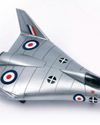
Mustard
BAC's Low Speed Research Vehicle

KOVOZAVODY PROSTEJOV (KP) 1 Was Monty's Triple'
Brian Derbyshire

SPECIAL HOBBY SAAB J-21A Review
From the late 1930s and early 1940s, with thewar in Europe raging around them andedging ever closer to its borders, the Flygvapnet had ordered Seversky P-35A aircraft, alongside Vultee Vanguards, but only sixty of the former and none of the latter were received.
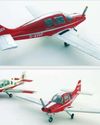
VFR MODELS Beagle B.121 Pup
This is the first 3D printed kit I have come across and it is really rather fine.

Hearts in the sky RIAT RETURNS
After a nearly three-year hiatus RIAT returned to our skies with a hot show in every sense of the word. SAM’s Mike Verier and Ray Ball were there.

Colour Conundrum
A Cancellation Conundrum - The RAF F-111s That Might Have Been Part 1

COPPER CAUDRON Caudron G.Ill in 1/32
Copper State Models have carved a name for themselves in the last few years producing high quality plastic kits of World War One subjects.
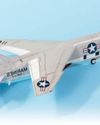
Academy RF-8A Crusader Conversion in 1/72
USMC squadron VMCJ-2 used six RF-8As during the Crisis (designation F8U-1P until September 1962), with others held in reserve, two flying out of Guantanamo Bay, and four out of NAS Key West.
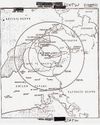
The Cuban Missile Crisis
Modelling US reconnaissance assets in 1/72 Part 2: The Nuclear Confrontation
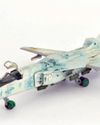
UKRAINIAT striker
The Sukhoi Su-24 is an all-weather attack aircraft capable of supersonic speeds and characterised by its side-by-side pilot/navigator seating and its variable geometry wing.